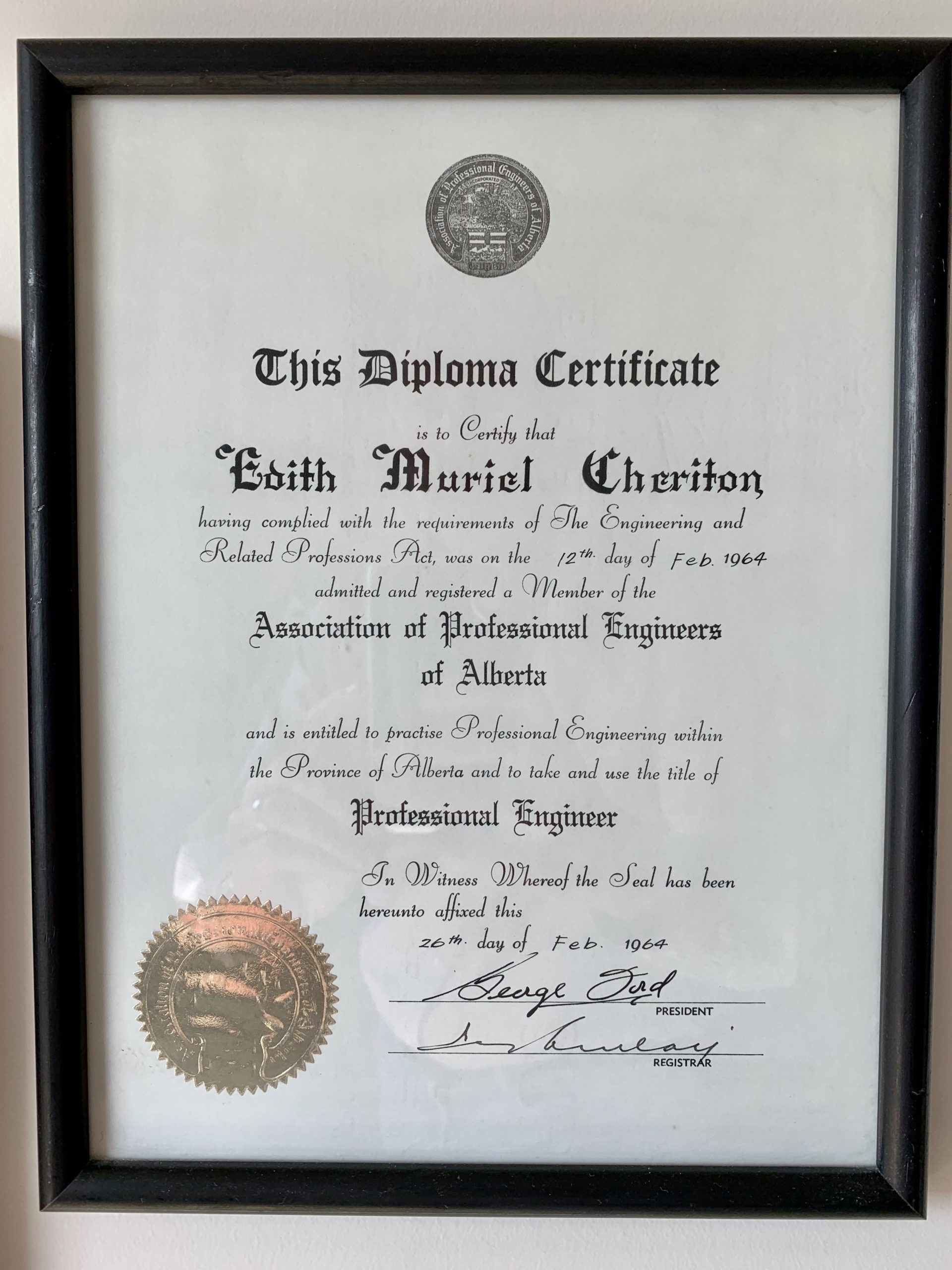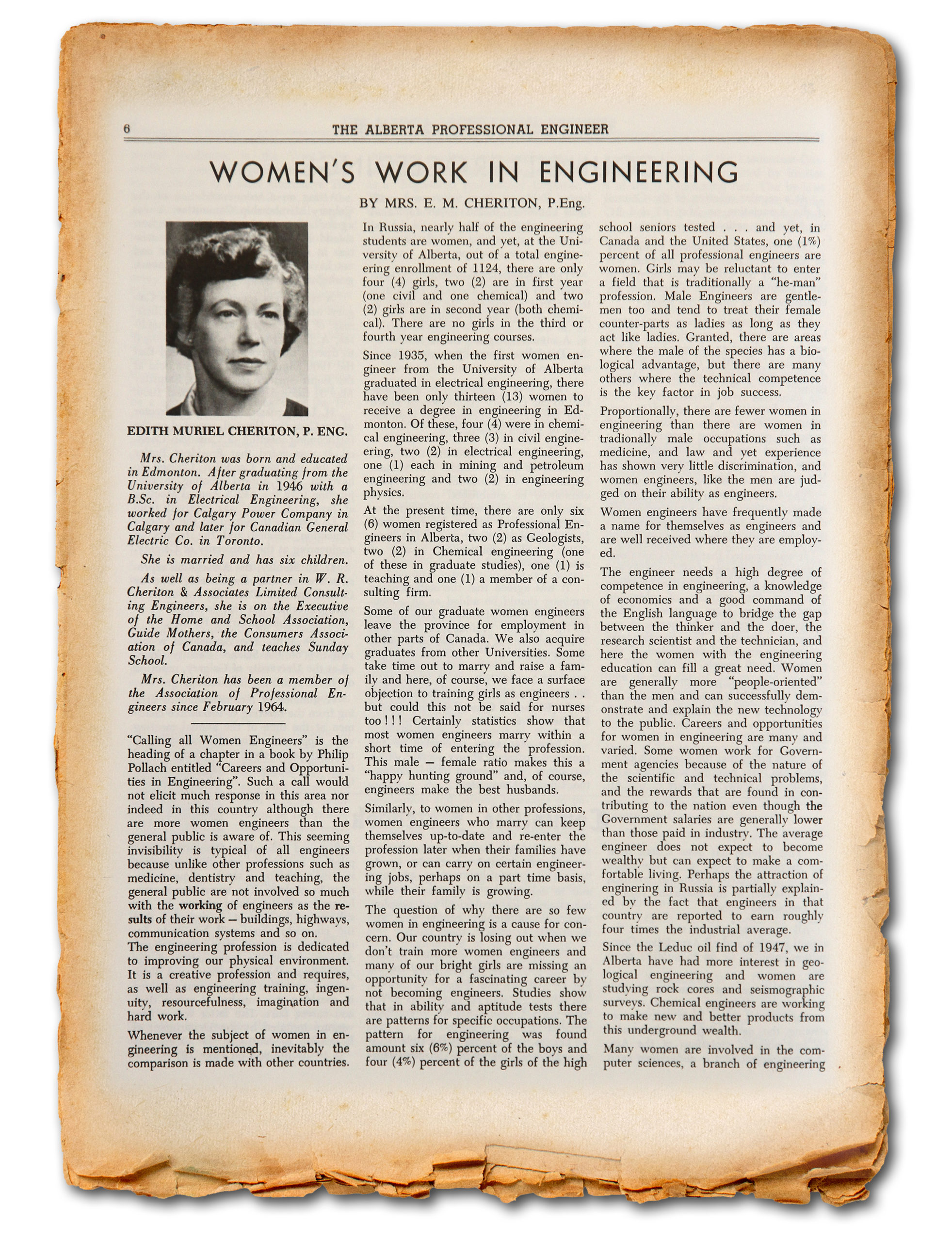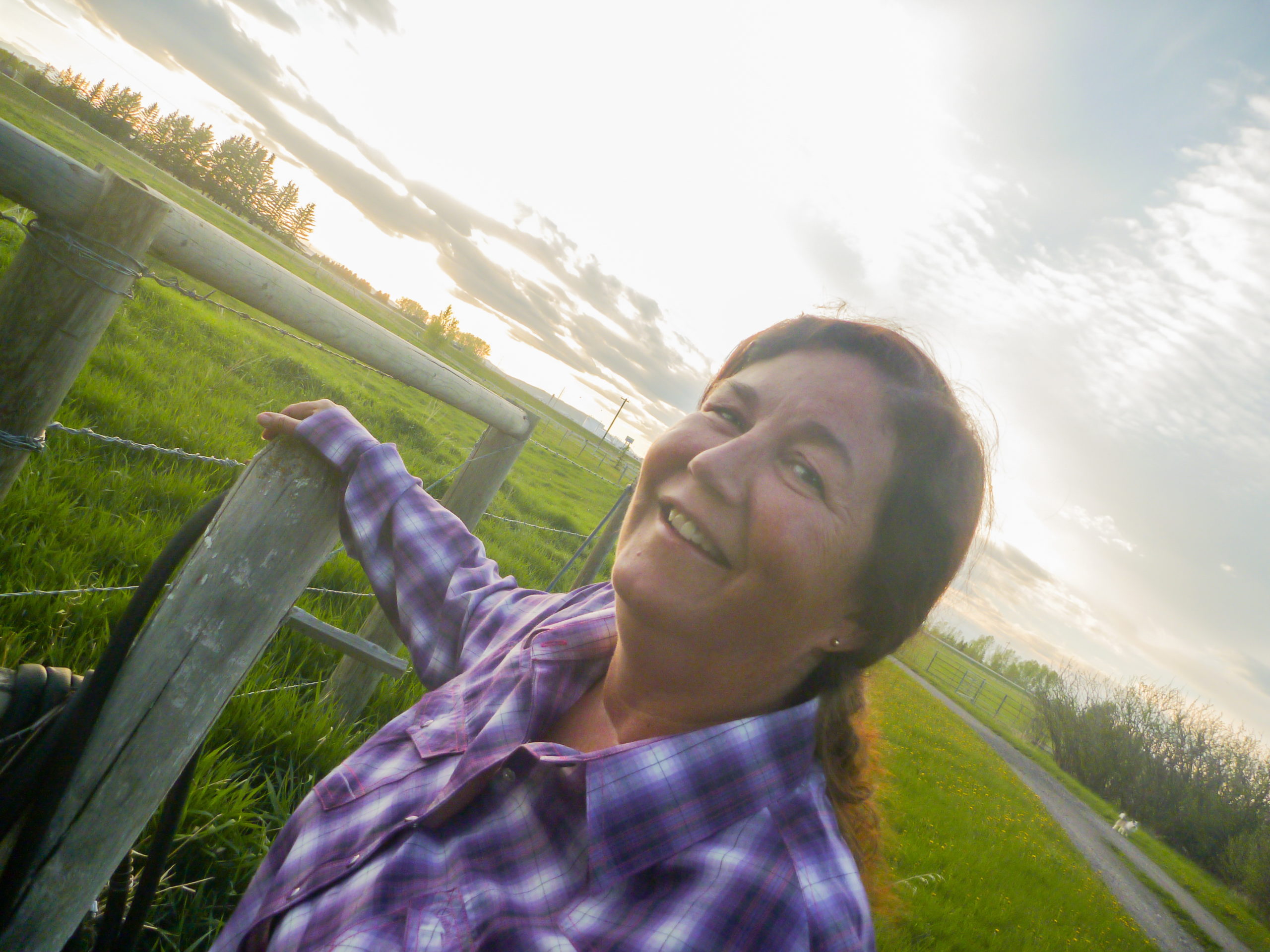The PEGG, October 1986
Champions of Change: Alberta’s First Women Engineers
Alberta’s first women engineers quietly transformed the face of engineering in Alberta. Though they were few—only a handful by the late 1960s—they overcame resistance and steadfastly cleared a path for those who followed.
Challenging the status quo, they were pioneers in their fields. They were also patriots. Entrepreneurs. Advocates for women in engineering. Leaders and role models.
Esther Rabkin—Alberta’s First Woman Engineering Graduate
When Esther Rabkin finished her electrical engineering degree at the University of Alberta in 1935, she earned a place in history as the province’s first woman engineering graduate. She had only been in Canada for 12 years—she moved to Calgary from Russia as a young girl—but already she was making her mark.
Not long after graduating, she accepted a job offer from Canadian General Electric in Toronto, working in the company’s lamp engineering design and testing department. In 1942, during the Second World War, Rabkin joined the Department of National Defence in Ottawa, working in the signals, research, and development divisions. Four years later, she started a new job at the National Research Council of Canada, translating research papers from Russian into English.
Rabkin opened her own business in 1951, called Technical Translation Services, and worked for the NRC into the early 1960s. Nuclear scientists, chemists, and others relied on her to correctly interpret complex terminology.
“It is because of the knowledge one can acquire both in science and language that I find translating such a fascinating occupation,” Rabkin was quoted as saying in a 1953 UNESCO report called Scientific and Technical Translating and Related Problems.
Three women engineers who followed Rabkin’s lead also broke new ground at the U of A, as professionals, and with APEGA.
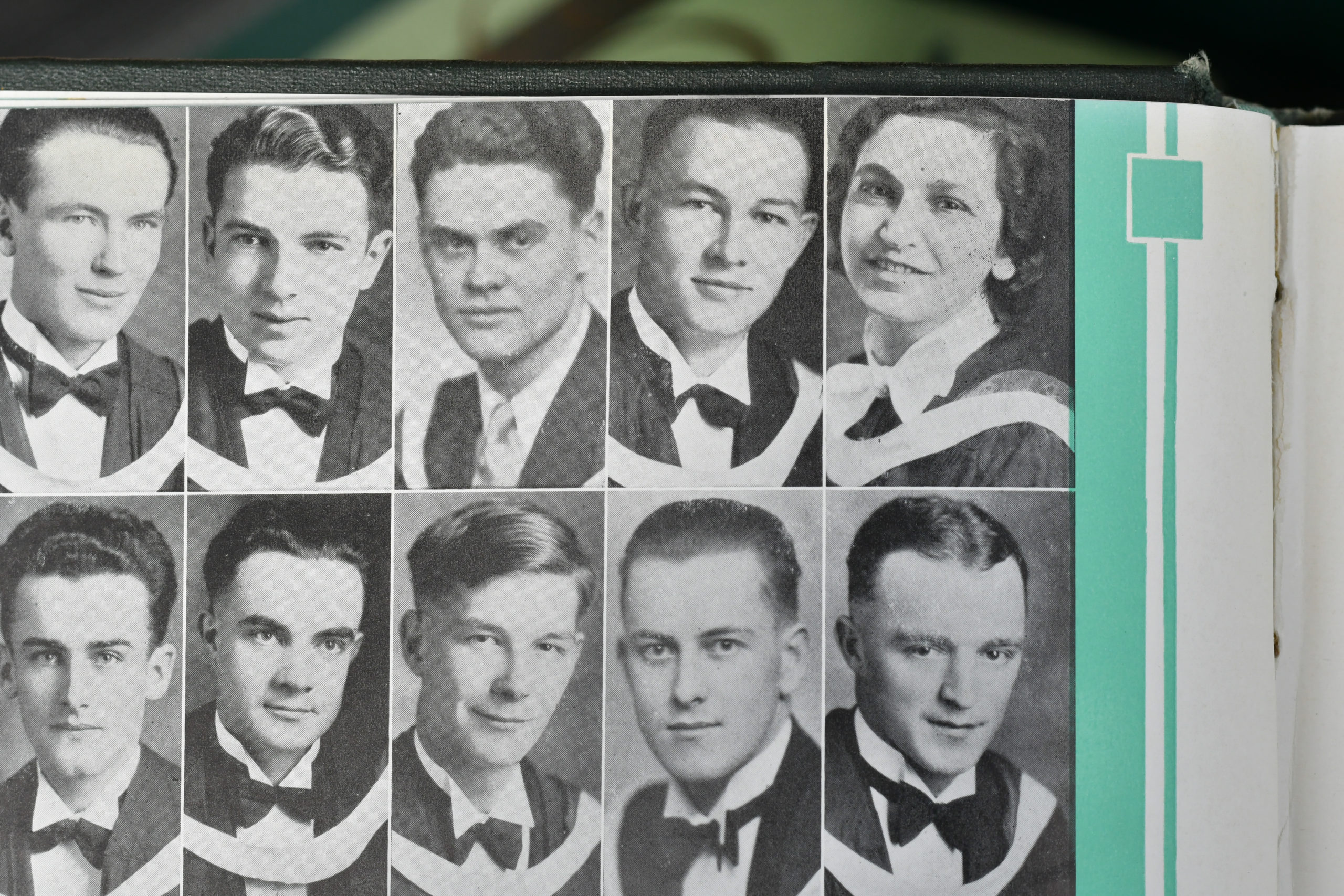
U of A Yearbook 1935
Muriel Cheriton, P.Eng.—APEGA’s First Woman Councillor
Muriel Cheriton dreamed of being a teacher, just like her parents. Through a twist of fate, she became an engineer instead.
In 1942, 18-year-old Muriel stopped by the registrar’s office at the University of Alberta, hoping to enrol in the education program. She had $100 in savings in her pocket—but discovered the tuition was $125. “That was a barrier I didn’t think I’d overcome. My parents couldn’t help me and in those days, there were no student loans,” Cheriton later recalled.
A clerk noticed Cheriton’s high marks in math and science. Why not apply for a $60 science bursary? the clerk suggested. It was wartime and women were being encouraged to take on non-traditional roles, engineering included.
“I signed up on the spot,” Cheriton said. “I really didn’t know what I was in for. My parents were rather surprised at my choice but believed in further education and supported me.”
As an electrical engineering student, Cheriton assisted in the war effort by repairing bomb equipment, learning Morse code, and assembling information on poisonous gases. In 1946 she became the second woman to graduate from engineering at the U of A.
Cheriton worked for a short time as an engineer for Calgary Power before moving to Toronto to work for Canadian General Electric as a lighting design engineer. In 1947, she married Ross, also an electrical engineer, and they moved to Edmonton and started a family.
In 1963, she joined her husband’s consulting firm as a partner, working with him on engineering projects and making sure the company ran smoothly. She also became active volunteering with what today we call APEGA.
Cheriton wrote an article for the self-regulating organization’s newsletter in 1968 on the topic Women’s Work in Engineering. She noted that only six women were registered in the association at the time—four engineers and two geologists.
“The question of why there are so few women in engineering is a cause for concern. Our country is losing out when we don’t train more women engineers and many of our bright girls are missing an opportunity for a fascinating career by not becoming engineers,” she wrote.
Cheriton did more to raise the profile of women in engineering.
She served on various APEGA committees in the 1960s and 1970s, and was elected APEGA’s first woman councillor, serving from 1972 to 1975. She helped found WISEST (Women in Scholarship, Engineering, Science and Technology), and encouraged young girls to explore careers in science and engineering.
After receiving a YWCA Tribute to Women Award in 1993, she told a reporter: “If I helped some young woman to think, ‘If she can do it I can,’ then I guess I’ve done my bit.”
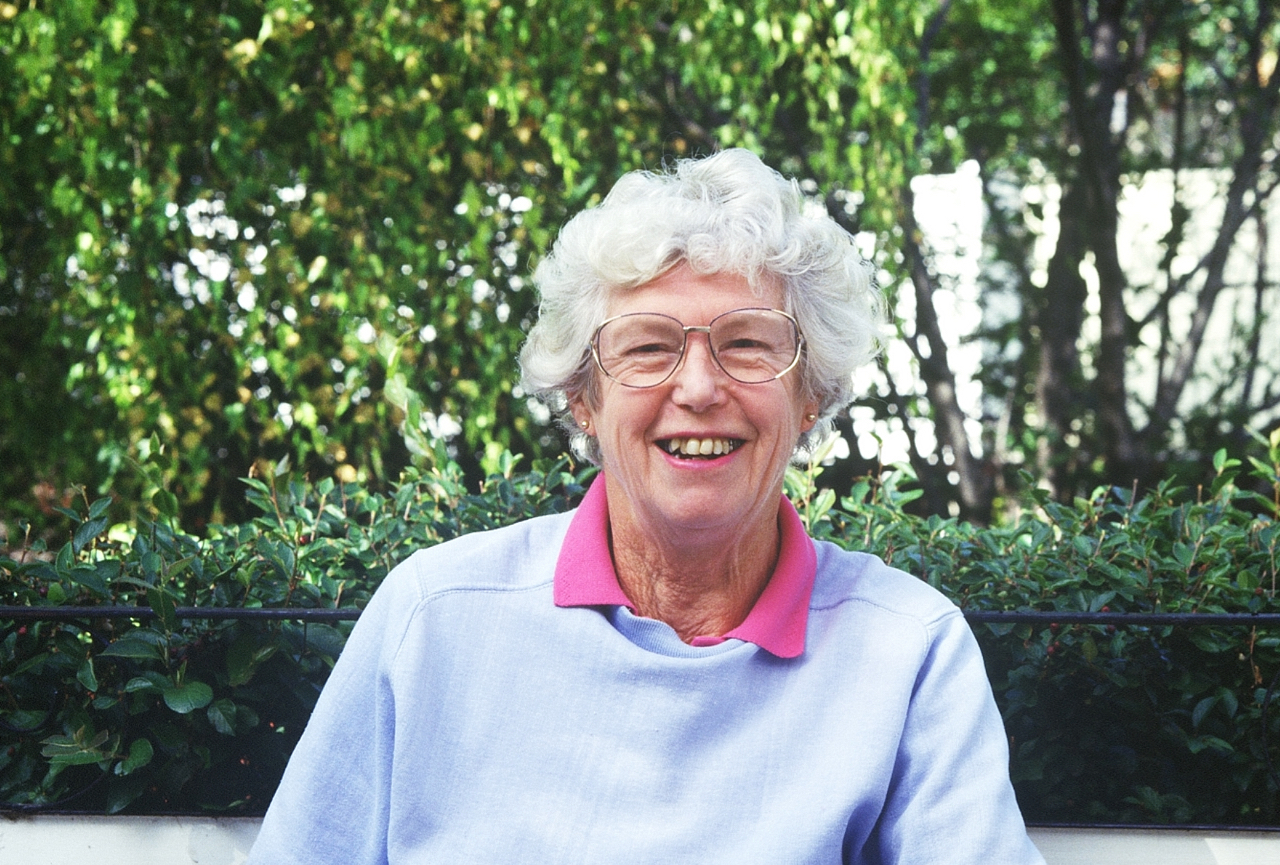
Photo courtesy of Kyle Cheriton
Virginia MacKay, P.Eng. – Alberta’s First Woman Civil Engineering Graduate
One of Virginia MacKay’s earliest influences—her father—was a civil engineering professor at the University of Alberta. Harry Webb was also an APEGA registrar.
So it’s perhaps not surprising young Virginia decided to follow in her father’s footsteps, enrolling in civil engineering at the U of A in 1944. Four years later, she became Alberta’s first woman civil engineering graduate.
She began her career as a civil engineering sessional instructor at the U of A, and then spent two years with the City of Edmonton engineering department as a draftsman and junior engineer.
It wasn’t easy being a trailblazer.
“The engineering profession made it clear when I graduated with a degree in civil engineering in 1948 that a woman could be a draftsman or a technical librarian, but not an engineer,” she wrote in 1994.
While raising two children, MacKay completed several teaching courses and, after moving to Calgary, taught high school and junior college math and physics in the late 1960s. Wanting to return to engineering, she worked for three years as a research assistant at the University of Calgary in the early 1970s, and then as an administrative assistant with a consulting engineering firm.
“I am happily working as a Research Assistant to Dr. M.A. Ward, who happens to be away on a year’s sabbatical, so I am pretty much on my own. Have plenty to learn!” she said in 1971 letter to APEGA Registrar Ivan Findlay, requesting to volunteer on a committee and seeking a list of other woman members. “Perhaps with Muriel Cheriton we can persuade some of them to become active in ‘our’ association along with the men.”
In 1976, she started a 20-year career freelancing in engineering communications, building a successful business writing reports and submissions for the petroleum industry and engineering consultants. She was also active as an APEGA volunteer, serving on various committees from 1972 to 1984, and then as a Councillor from 1984-1987.
Always keen to connect with other women professionals, MacKay helped start the Association of Women Engineers (later the Association of Women in Engineering and Science), serving as its first president in 1981. In this role, she promoted APEGA membership as an essential step in the careers of professional women in engineering.
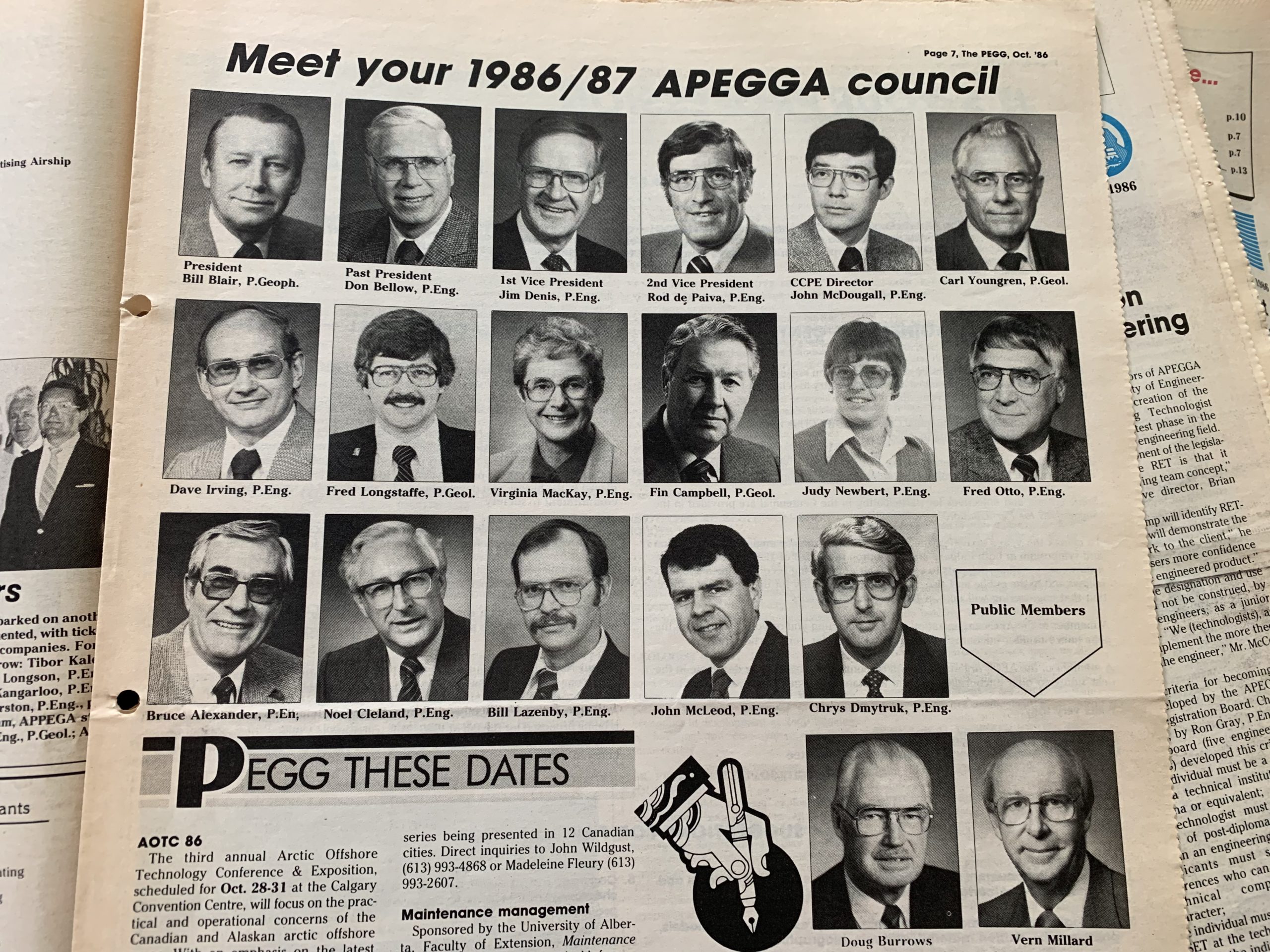
The PEGG October 1986
Judy Newbert, P.Eng.—Alberta’s First Woman Mechanical Engineering Graduate
The wheels of change can turn slowly, and so it was that in 1971, Judy Newbert, P.Eng., became the first woman to graduate with a mechanical engineering degree from the University of Alberta. She had also earned an honours degree in physics a year earlier, in 1970.
Newbert started her career as an aeronautical engineer with Field Aviation Ltd. before becoming an assistant district aeronautical engineer for the Department of Transport.
She switched career paths in 1974, joining the oilpatch as a petroleum engineer. She travelled the world for various companies, including Home Oil Ltd., Gulf Canada Resources, Westmin Resources, Petro-Canada/Suncor, and Pengrowth. In 1989, she struck out on her own as a consultant, founding Newbert Petroleum Engineering Ltd.
Newbert encouraged girls and women to get involved in the oil and gas industry, speaking at schools and conferences about her own experiences. She was also a long-time volunteer on APEGA’s discipline committee and served on APEGA Council from 1985 to 1987.


